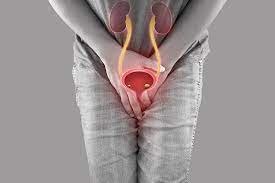Urinary Incontinence – This course is designed to understand the concept of community health nursing: nurses’ roles and interventions in family health, school health, occupational health, environmental health, elderly health care, gender issues, disaster management and principles and terminology of epidemiology. The aim of the course is to acquire knowledge and skills in community health nursing.
Urinary Incontinence
Definition of Urinary Incontinence:
Urinary incontinence (UI), also known as involuntary urination, is any uncontrolled leakage of urine. It is a common and distressing problem, which may have a large impact on quality of life
Or
Urinary incontinence is the unintentional loss of urine. Inability to hold urine in the bladder due to loss of voluntary control over the urinary sphincters resulting in the involuntary passage of urine.

Causes of Urinary Incontinence:
The causes and the type of incontinence are closely linked.
| Stress incontinence | Factors include:
|
| Urge incontinence | The following causes of urge incontinence have been identified:
|
| Overflow incontinence | This happens when there is an obstruction or blockage to the bladder. The following may cause an obstruction:
|
| Total incontinence | This can result from:
|
| Other causes | These include:
|

Risk Factors
The following are risk factors linked to urinary incontinence:
- Obesity: This puts extra pressure on the bladder and surrounding muscles. It weakens the muscles, making leakage more likely when the person sneezes or coughs.
- Smoking: This can lead to a chronic cough, which may result in episodes of incontinence.
- Gender: Women have a higher chance of experiencing stress incontinence than men, especially if they have had children.
- Old age: The muscles in the bladder and urethra weaken with age.
- Some diseases and conditions: Diabetes, kidney disease, spinal cord injury, and neurologic diseases, for example, a stroke, increase the risk.
- Prostate disease: Incontinence may present after prostate surgery or radiation therapy.
Types of Urinary Incontinence:
The type of urinary incontinence is normally linked to the cause.
They include:
- Stress incontinence: Urine leaks out while coughing, laughing, or doing some activity, such as running or jumping
- Urge incontinence: There is a sudden and intense urge to urinate, and urine leaks at the same time or just after.
- Overflow incontinence: The inability to empty the bladder completely can result in leaking
- Total incontinence: The bladder cannot store urine
- Functional incontinence: Urine escapes because a person cannot reach the bathroom in time, possibly due to a mobility issue.
- Mixed incontinence: A combination of types
Clinical Feature of Urinary Incontinence:
Many people experience occasional, minor leaks of urine. Others may lose small to moderate amounts of urine more frequently.
Types of urinary incontinence include:
- Stress incontinence. Urine leaks when you exert pressure on your bladder by coughing, sneezing, laughing, exercising or lifting something heavy.
- Urge incontinence. You have a sudden, intense urge to urinate followed by an involuntary loss of urine. You may need to urinate often, including throughout the night. Urge- incontinence may be caused by a minor condition, such as infection, or a more-severe condition such as a neurologic disorder or diabetes.
- Overflow incontinence. You experience frequent or constant dribbling of urine due to a bladder that doesn’t empty completely.
- Functional incontinence. A physical or mental impairment keeps you from making it to the toilet in time. For example, if you have severe arthritis, you may not be able to unbutton your pants quickly enough.
- Mixed incontinence. You experience more than one type of urinary incontinence.

Complications of Urinary Incontinence:
Complications of chronic urinary incontinence include:
- Skin problems. Rashes, skin infections and sores can develop from constantly wet skin.
- Urinary tract infections. Incontinence increases your risk of repeated urinary tract infections.
- Impacts on your personal life. Urinary-incontinence can affect your social, work and personal relationships.
Prevention of Urinary Incontinence:
Urinary incontinence isn’t always preventable. However, to help decrease your risk:
- Maintain a healthy weight
- Practice pelvic floor exercises
- Avoid bladder irritants, such as caffeine, alcohol and acidic foods
- Eat more fiber, which can prevent constipation, a cause of urinary-incontinence
- Don’t smoke, or seek help to quit smoking
Treatment of Urinary Incontinence:
Treatment will depend on several factors, such as the type of incontinence, the patient’s age, general health, and their mental state.
A. Stress incontinence:
Pelvic floor exercises, also known as Kegel exercises, help, strengthen the urinary sphincter and pelvic floor muscles – the muscles that help control urination.
B.Bladder training
a) Delaying the event:
The aim is to control urge. The patient learns how to delay urination whenever there is an urge to do so.noul silitar vizuego des
b) Double voiding:
This involves urinating, then waiting for a couple of minutes, then
urinating again.
c). Toilet timetable:
The person schedules bathroom at set times during the day, for example, every 2 hours.

Bladder training helps the patient gradually regain control over their bladder.
C. Medications for urinary incontinence:
If medications are used; this is usually in combination with other techniques or exercises.
The following medications are prescribed to treat urinary-incontinence:
(a) Anticholinergics calm overactive bladders and may help patients with urge incontinence.
b) Topical estrogen may reinforce tissue in the urethra and vaginal areas and lessen some of the symptoms.
F34/ back to back
c) Imipramine (Tofranil) is a tricyclic antidepressant.
D. Medical devices
The following medical devices are designed for females.
a) Urethral inserts
b) Pessary
c) Radiofrequency therapy
d) Botox (botulinum toxin type
e) Bulking agents
f) Sacral nerve stimulator
E. Surgery
a) Sling procedures
b) Colposuspension
c) Artificial sphincter
F. Other options
a) Urinary Catheter
b) Absorbent pads
Read more:
